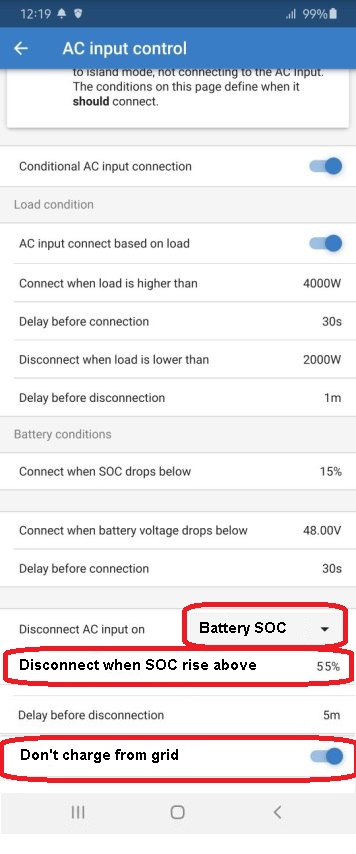Hi developers,
@Guy Stewart (Victron Community Manager) , @mvader (Victron Energy) , @Thiemo van Engelen (Victron Energy staff)
I am respectfully ask you for something, that it's possible you heard before, at least from @MondeoMan ...
It will be nice that on AC Input Control option of the Multi RS Solar to have, beside the "Bulk finished", "Absorption finished" and "Battery voltage", an additional option "Battery SOC", where you can set whatever SOC you want.
Then, besides this, to have a on/off button, like "Don't charge batteries from grid".
See below what I mean...
In this way, when you function in self-consumption mode, and you don't have solar for a few days and the SOC drops below a specific value, connect the grid, consume from grid, but Don't charge from grid.
Next day(s), when the solar will be available, solar will charge the battery and when the battery will rise above a specific Battery SOC, disconnect from grid.
What do you say?
It would be a perfect product for self-consumption, without the need for adding ESS.
LE:
Or, maybe, an option like "Solar charger only" to be put on the On/Off menu, below Mode selection?...
Anyway, an option like "Battery SOC" for disconnection from grid is a perfect complement for the "Connect when SOC" option on AC Input Control section.
Thank you for listening !

